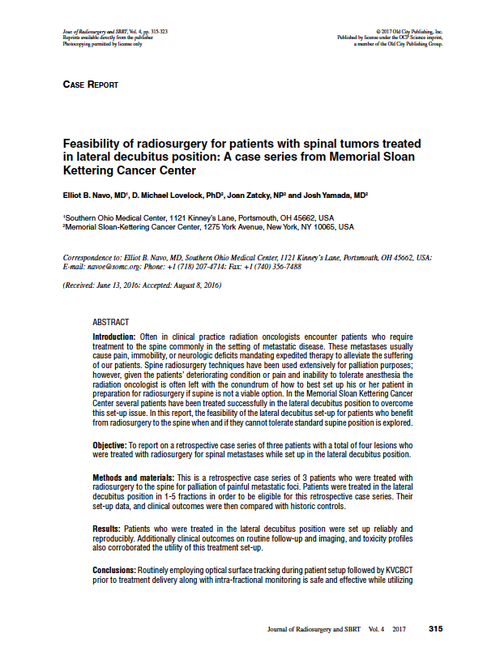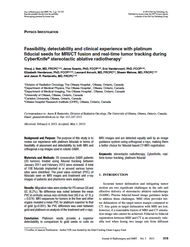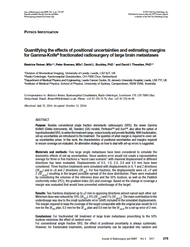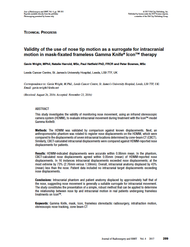- Home
- Journal Contents Downloads
- JRSBRT Downloads
- JRSBRT 4.4, p. 315-323
Product Description
Case Report
Feasibility of radiosurgery for patients with spinal tumors treated in lateral decubitus position: A case series from Memorial Sloan Kettering Cancer Center
Elliot B. Navo, D. Michael Lovelock, Joan Zatcky and Josh Yamada
Introduction: Often in clinical practice radiation oncologists encounter patients who require treatment to the spine commonly in the setting of metastatic disease. These metastases usually cause pain, immobility, or neurologic deficits mandating expedited therapy to alleviate the suffering of our patients. Spine radiosurgery techniques have been used extensively for palliation purposes; however, given the patients’ deteriorating condition or pain and inability to tolerate anesthesia the radiation oncologist is often left with the conundrum of how to best set up his or her patient in preparation for radiosurgery if supine is not a viable option. In the Memorial Sloan Kettering Cancer Center several patients have been treated successfully in the lateral decubitus position to overcome this set-up issue. In this report, the feasibility of the lateral decubitus set-up for patients who benefit from radiosurgery to the spine when and if they cannot tolerate standard supine position is explored.
Objective: To report on a retrospective case series of three patients with a total of four lesions who were treated with radiosurgery for spinal metastases while set up in the lateral decubitus position.
Methods and materials: This is a retrospective case series of 3 patients who were treated with radiosurgery to the spine for palliation of painful metastatic foci. Patients were treated in the lateral decubitus position in 1-5 fractions in order to be eligible for this retrospective case series. Their set-up data, and clinical outcomes were then compared with historic controls.
Results: Patients who were treated in the lateral decubitus position were set up reliably and reproducibly. Additionally clinical outcomes on routine follow-up and imaging, and toxicity profiles also corroborated the utility of this treatment set-up.
Conclusions: Routinely employing optical surface tracking during patient setup followed by KVCBCT prior to treatment delivery along with intra-fractional monitoring is safe and effective while utilizing the lateral decubitus position for the treatment of spinal metastases for patients who cannot tolerate the supine position. Finally the patient follow-up also corroborated that treatments were successful thus lending credence to the safety, ease, effectiveness, and feasibility of this patient set-up.
Keywords: spine radiosurgery, spine SBRT, spine SRS, lateral decubitus position, paraspinal mass, immobilization
After payment has been processed for your order of a digital copy (PDF) of this article, you will see a download link on your completed order page and also receive an email containing a download link. The links, which will enable you to download one copy of the article, will expire after 24 hours.
 Loading... Please wait...
Loading... Please wait...








